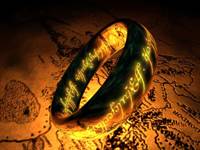 Waldenbooks in Northwoods Mall is closing for good this month.
Waldenbooks in Northwoods Mall is closing for good this month.
Waldenbooks’ parent company Borders Group, Inc., released a statement in November 2009 that it would be closing 200 Waldenbooks stores this month in order to improve the chain’s profitability. Borders Group, headquartered in Ann Arbor, Michigan, lost $39 million the third quarter of 2009. Border Group CEO Ron Marshall explained, “Through this right-sizing, we will reduce the number of stores with operating losses, reduce our overall rent expense and lease-adjusted leverage and generate cash flow through sales and working capital reductions.”
Also closing this month are Waldenbooks stores in Aurora, Calumet City, Danville, Gurnee, Joliet, Lincolnwood, Marion, and Sterling. The Waldenbooks in Galesburg closed a year ago this month. The Borders superstore in the Shoppes at Grand Prairie is unaffected.
The history of Waldenbooks in a nutshell: In 1933, Lawrence W. Holt and Melvin T. Kafka founded a company “they believed would help people cope with the effects of the Depression. Specifically, Holt and Kafka’s new company lent popular books for three cents a day, saving people the cost of purchasing.” This sounds similar to the way we rent movies and video games today. Once cheap paperback books started being published in the 1950s, Kafka retired and Hoyt took over the company. In 1962, the company started opening retail stores — selling books instead of renting them. It was named after the book Walden by Henry David Thoreau. The company was acquired by a retail conglomerate called Carter Hawley Hale in 1969. It was acquired by many other companies over the years, including K-Mart, which also acquired Borders. In 1995, Borders and Waldenbooks initiated a public offering, eventually buying out K-Mart’s ownership interest.
I’m not sure when Waldenbooks opened in Northwoods Mall, but it wouldn’t surprise me if it were an original tenant. It’s been there as long as I can remember. Its departure will leave Northwoods without any bookstore. The mall’s other bookstore, B. Dalton Booksellers, closed several years ago after its parent company, Barnes & Noble, built a superstore in the Glen Hollow shopping center.

 When the Lord of the Rings movies came out, I started reading Tolkien’s books at the same time. For the first two movies (Fellowship of the Ring, The Two Towers), I watched the movie first and then read the book, which was pretty cool. I loved how the book would give extra descriptions, extra scenes, extra characters when compared to the movies.
When the Lord of the Rings movies came out, I started reading Tolkien’s books at the same time. For the first two movies (Fellowship of the Ring, The Two Towers), I watched the movie first and then read the book, which was pretty cool. I loved how the book would give extra descriptions, extra scenes, extra characters when compared to the movies.  While it does follow the Pilgrims from Leiden to Plymouth Rock, the most interesting part of the book to me is its history of
While it does follow the Pilgrims from Leiden to Plymouth Rock, the most interesting part of the book to me is its history of